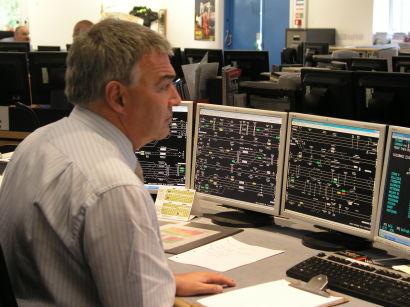NETWORK RAIL has unveiled plans to close nearly all the 800 signalling centres, panels and boxes which presently control the National Rail network, replacing them with 14 Rail Operating Centres and reducing the signalling workforce by two-thirds, to 2,000.
The changeover will take more than two decades to complete and cost some £1.1 billion.
However, it is expected that the annual savings will amount to at least £200 million by 2030, when 80 per cent of the project should be complete, and £250 million by the 2040s.
Some ROCs will control an entire Network Rail route so that, for example, Didcot ROC will regulate the entire Great Western network in England, from Penzance to Bristol and Paddington, and as far north as the outskirts of Birmingham, where Saltley ROC would take over.
The West Coast Main Line will be run by just four ROCs -- Glasgow (Cowlairs), Manchester, Saltley and Rugby, while East Anglia will be controlled from a new ROC at Romford. The largest ROC will be at York, which will cover north east England from The Wash to the Scottish borders, and also all the East Coast Main Line in England.
Wales will be run by a single ROC at Cardiff, and Scotland by two -- at Glasgow and Edinburgh.
Network Rail says train regulation will become more efficient, thanks to new traffic management and control systems which will improve capacity.
The changes will also be compatible with the spread of ERTMS, because the equipment in the new ROCs will be 'agnostic' about the signalling systems to which they are connected, and in the case of ERTMS will link directly with its layer of train control functions.
But it will be the end of the line for the remaining mechanical boxes and their associated semaphore signals, which will be replaced by modular signals.
The rail unions were briefed about the project earlier this week, and the RMT said it would not accept any compulsory redundancies. A spokesman added: "We expect Network Rail to abide by the current Promotion Transfer and Redundancy Arrangements and in addition we will be seeking a shorter working week, increased annual leave and voluntary retirement at 55."
Network Rail said its discussions with the unions would continue, but that it aimed to avoid any compulsory job losses.


